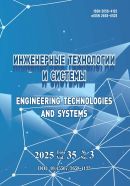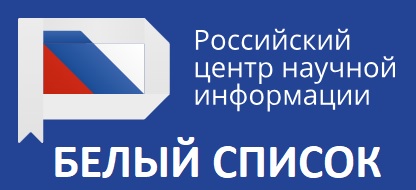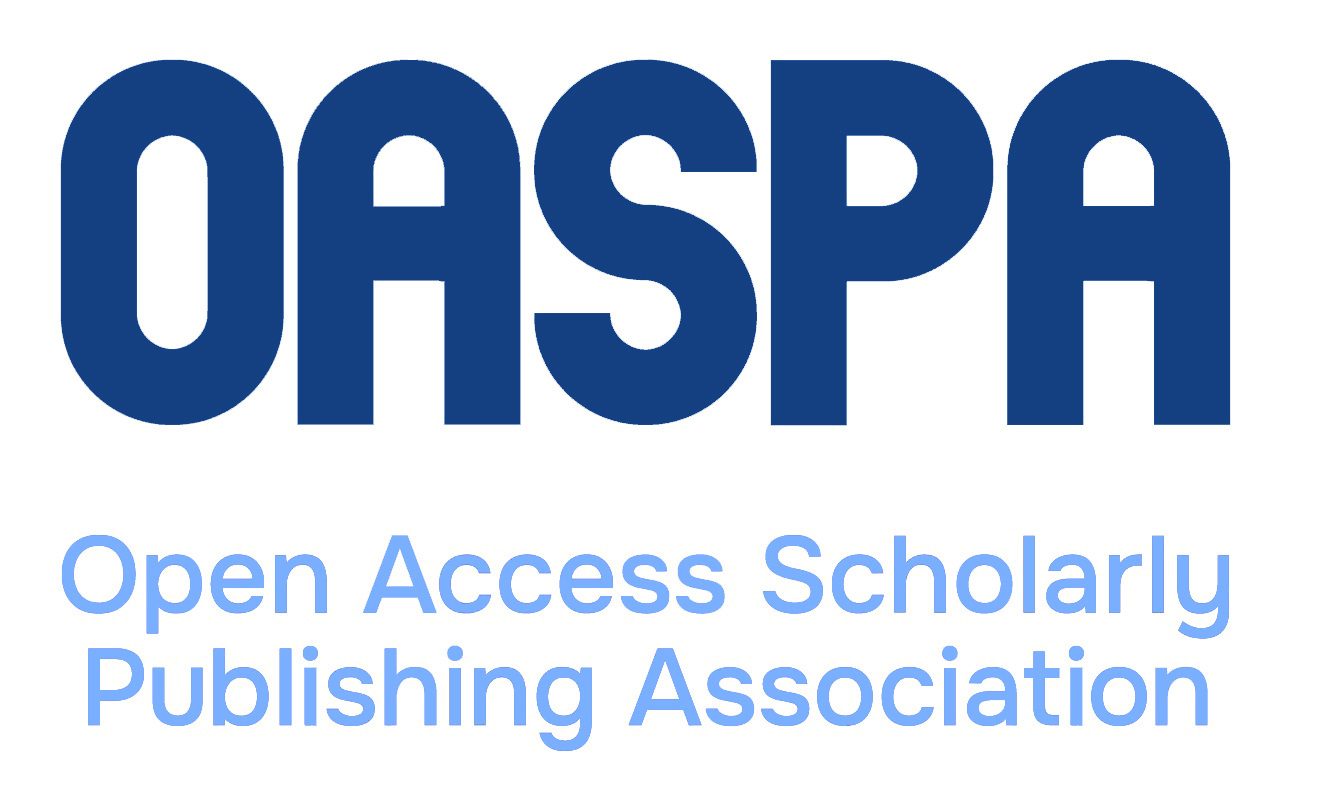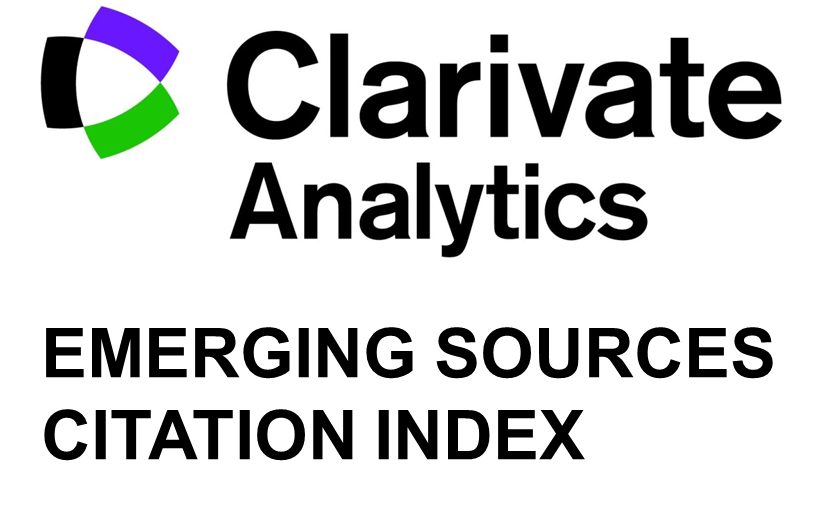DOI: 10.15507/2658-4123.032.202204.613-629
Studying the Thermophysical Characteristics of the Muscle Mass of the Black Soldier Fly Larvaes (Hermetia Illucens) as a Drying Object
Valentina A. Doroshenko
Assistant of the Chair of Food Engineering and Technology, Don State Technical University (1 Gagarin Square, Rostov-on-Don 344000, Russian Federation), ORCID: https://orcid.org/0000-0003-3538-3358, Researcher ID: B-8601-2018, This email address is being protected from spambots. You need JavaScript enabled to view it.
Igor A. Khozyaev
Professor of the Chair of Food Engineering and Technology, Don State Technical University (1 Gagarin Square, Rostov-on-Don 344000, Russian Federation), ORCID: https://orcid.org/0000-0003-3821-2634, This email address is being protected from spambots. You need JavaScript enabled to view it.
Dmitry A. Yakovlev
Associate Professor of the Chair of Food Engineering and Technology, Don State Technical University (1 Gagarin Square, Rostov-on-Don 344000, Russian Federation), ORCID: https://orcid.org/0000-0001-8145-9128, Researcher ID: H-6373-2017, This email address is being protected from spambots. You need JavaScript enabled to view it.
Artyom A. Doroshenko
Associate Professor of the Chair of Design and Technical Service of Transport Technological Systems, Don State Technical University (1 Gagarin Square, Rostov-on-Don 344000, Russian Federation), ORCID: https://orcid.org/0000-0003-3739-7059, Researcher ID: Q-3877-2016, This email address is being protected from spambots. You need JavaScript enabled to view it.
Alexey A. Shcherbakov
Assistant of the Chair of Food Engineering and Technology, Don State Technical University (1 Gagarin Square, Rostov-on-Don 344000, Russian Federation), ORCID: https://orcid.org/0000-0001-6856-2219, Researcher ID: GQI-3325-2022, This email address is being protected from spambots. You need JavaScript enabled to view it.
Abstract
Introduction. The main component of the compound feedstuff is fish meal, which has unstable quality and high price. Fish and meat-and-bone meals are replaced with protein concentrates and higher quality larvae proteins. The source of feed protein is the biomass of the black soldier flies (Hermetia illucens), which have a rich amino acid composition and also process food waste. The aim of the work is to study the thermal-physical characteristics of the muscle mass of the black soldier fly larvaes (Hermetia illucens).
Материалы и методы. The study focused on the muscle mass of black soldier fly larvaes (Hermetia illucens). The subject of the study is thermal-physical regularities during the drying process. The studies were conducted on the basis of Don State Technical University. The article describes determination of thermal-physical characteristics such as specific heat, thermal conductivity, moisture of the raw material, and oiliness.
Results. Heat conductivity coefficient of water 0.555 W/(m∙K) for food and feed products from 0.25 to 0.40 W/(m∙K) black Soldier Fly larvae have a heat conductivity equal to 0.144 W/(m∙K), which is lower than conventional feedstuff components. The humidity of the examined raw material is 45% or higher while the heat conductivity remains linear and practically does not increase.
Discussion and Conclusion. The results obtained during the work can be used for parameter determination and design of various types of dryers, and for mathematical description of the dynamics and kinetics of drying.
Keywords: biomass, compound feedstuff, black soldier fly larvae, drying, specific heat, protein
Acknowledgements: We express gratitude to the scientific and pedagogical team of the Chair of Food Engineering and Technology of Don State Technical University. We also thank the reviewers of this article.
Conflict of interest: The authors declare no conflict of interest.
For citation: Doroshenko V.A., Khozyaev I.A., Yakovlev D.A., et al. Studying the Thermophysical Characteristics of the Muscle Mass of the Black Soldier Fly Larvaes (Hermetia Illucens) as a Drying Object. Engineering Technologies and Systems. 2022;32(4):613‒629. doi: https://doi.org/10.15507/2658-4123.032.202204.613-629
Contribution of the authors:
V. A. Doroshenko – writing and formatting the article, correcting the text.
I. A. Khozyaev – scientific guidance, finalization of the article.
D. A. Yakovlev – scientific guidance, finalization of the article.
A. A. Doroshenko – preparation of the article, calculation of thermophysical parameters.
A. A. Shcherbakov – conducting experimental research, finalization of the article.
All authors have read and approved the final manuscript.
Submitted 12.09.2022; approved after reviewing 18.10.2022;
accepted for publication 25.10.2022
REFERENCES
1. Gao Y., Zhao Y.-J., Xu M.-L, Shi S.-S. Soybean Hawkmoth (Clanis Bilineata Tsingtauica) as Food Ingredients: a Review. CyTA – Journal of Food. 2021;19(1):341–348. doi: https://doi.org/10.1080/19476337.2021.1903082
2. Do Carmo C.S., Costa L., Serra A.T., et al. Chapter 4 – Alternative Protein Sources. In: Galanakis C.M. (ed.). Food Technology Disruptions. Academic Press; 2021. p. 131–174. doi: https://doi.org/10.1016/B978-0-12-821470-1.00010-0
3. Ordoñez-Araque R., Egas-Montenegro E. Edible Insects: a Food Alternative for the Sustainable Development of the Planet. International Journal of Gastronomy and Food Science. 2021;23. doi: https://doi.org/10.1016/j.ijgfs.2021.100304
4. Alemu M.H., Olsen S.B., Vedel S.E., et al. Combining Product Attributes with Recommendation and Shopping Location Attributes to Assess Consumer Preferences for Insect-Based Food Products. Food Quality and Preference. 2017;55:45–57. https://doi.org/10.1016/j.foodqual.2016.08.009
5. Karthick Raja P., Aanand S., Stephen Sampathkumar J., Padmavathy P. Silkworm Pupae Meal as Alternative Source of Protein in Fish Feed. Journal of Entomology and Zoology Studies. 2019;7(4):78–85. Available at: https://www.entomoljournal.com/archives/2019/vol7issue4/PartB/7-3-228-911.pdf (accessed 12.11.2022).
6. Kaushik S.J., Hemre G.-I. 12 – Plant Proteins as Alternative Sources for Fish Feed and Farmed Fish Quality. In: Lie Ø. (ed.). In Woodhead Publishing Series in Food Science, Technology and Nutrition, Improving Farmed Fish Quality and Safety. Woodhead Publishing; 2008. p. 300–327. https://doi.org/10.1533/9781845694920.2.300
7. Pham H.D., Siddik M.A.B., Fotedar R., et al. Substituting Fishmeal with Lupin Lupinus Angustifolius Kernel Meal in the Diets of Cobia Rachycentron Canadum: Effects on Growth Performance, Nutrient Utilization, Haemato-Physiological Response, and Intestinal Health. Animal Feed Science and Technology. 2020;267. doi: https://doi.org/10.1016/j.anifeedsci.2020.114556
8. Abbasi S.A., Nayeem-Shah M., Abbasi T. Vermicomposting of Phytomass: Limitations of the Past Approaches and the Emerging Directions. Journal of Cleaner Production. 2015;93:103–114. doi: https://doi.org/10.1016/j.jclepro.2015.01.024
9. Gasco L., Acuti G., Bani P., et al. Insect and Fish by-Products as Sustainable Alternatives to Conventional Animal Proteins in Animal Nutrition. Italian Journal of Animal Science. 2020;19(1):1360–1372. doi: https://doi.org/10.1080/1828051X.2020.1743209
10. Hodar A.R., Vasava R.J., Mahavadiya D.R. Joshi N.H. Fish Meal and Fish Oil Replacement for Aqua Feed Formulation by Using Alternative Sources: a Review. Journal of Experimental Zoology. 2020;23(1):13‒21. Available at: https://www.cabdirect.org/cabdirect/abstract/20203130877 (accessed 12.11.2022).
11. Gasco L., Biancarosa I., Liland N.S. From Waste to Feed: a Review of Recent Knowledge on Insects as Producers of Protein and Fat for Animal Feeds. Current Opinion in Green and Sustainable Chemistry. 2020;23:67–79. doi: https://doi.org/10.1016/j.cogsc.2020.03.003
12. Gasco L., Biasato I., Dabbou S., et al. Animals Fed Insect-Based Diets: State-of-the-Art on Digestibility. Performance and Product Quality. Animals. 2019;9(4). doi: https://doi.org/10.3390/ani9040170
13. Lock E.J., Biancarosa I., Gasco L. Insects as Raw Materials in Compound Feed for Aquaculture. In: Halloran A., Flore R., Vantomme P., Roos N. (eds). Edible Insects in Sustainable Food Systems. Cham: Springer; 2018. doi: https://doi.org/10.1007/978-3-319-74011-9_16
14. Nekrasov R.V., Chabaev M.G., Zelenchenkova A.A., et al. Nutritional Properties of Hermetia Illucens L. Larvas – A New Forage Product for Young Pigs (Sus Scrofa Domesticus Erxleben). Agricultural Biology. 2019;54(2):316–325. (In Russ., abstract in Eng.) doi: https://doi.org/10.15389/agrobiology.2019.2.316rus
15. Van Huis A. Potential of Insects as Food and Feed in Assuring Food Security. Annual Review of Entomology. 2013;58:563–583. doi: https://doi.org/10.1146/annurev-ento-120811-153704
16. Barragan-Fonseca K.B., Dicke M., van Loon J.J.A. Nutritional Value of the Black Soldier Fly (Hermetia Illucens L.) and Its Suitability as Animal Feed – A Review. Journal of Insects as Food and Feed. 2017:3(2):105–120. doi: https://doi.org/10.3920/jiff2016.0055
17. Niu Y., Zheng D., Yao B., et al. A Novel Bioconversion for Value-Added Products from Food Waste Using Musca Domestica. Waste Management. 2017;61:455–460. doi: https://doi.org/10.1016/j.wasman.2016.10.054
18. Kurkembaeva B.M., Fedorovykh Yu.V., Ponomarev S.V., Ushakova N.A. New Feed Protein Products as Substitutes for Fishmeal in the Composition of Complete Feed for Tilapia When Its Farming in RAS. In: Innovative Solutions to Improve the Efficiency of Aquaculture. Materials of the All-Russian Scientific-Practical Conference. 2019. p. 194–197. Available at: https://www.elibrary.ru/item.asp?id=37418435 (accessed 12.11.2022). (In Russ., abstract in Eng.)
19. Ushakova N.A., Ponomarev S.V., Fedorovykh Yu.V., et al. Physiological Bases of the Nutritional Value of the Hermetia Illucens Larrow Concentrate in the Fish Diet. In: Ushakova N.A., Ponomarev S.V., Fedorovykh Yu.V., et al. (eds). Proceedings of the Russian Academy of Sciences. Biological series. Vol. 3. 2020. p. 293–300. (In Russ., abstract in Eng.) doi: https://doi.org/10.31857/S0002332920030108
20. Koutsos L., McComb A., Finke M. Insect Composition and Uses in Animal Feeding Applications: A Brief Review. Annals of the Entomological Society of America. 2019;112(6):544–551. doi: https://doi.org/10.1093/aesa/saz033
21. Oteri M., Di Rosa A.R., Lo Presti V., et al. Black Soldier Fly Larvae Meal as Alternative to Fish Meal for Aquaculture Feed. Sustainability. 2021;13. doi: https://doi.org/10.3390/su13105447
22. Rudoy D.V., Pakhomov V.I., Maltseva T.A., Olshevskaya A.V. Analysis of the Effect of Microwave Processing of Dried Biomass of Hermetia Illucens Insects on the Process of Fat Extraction. Polythematic Online Scientific Journal of Kuban State Agrarian University. 2021;74:321–333. (In Russ., abstract in Eng.) doi: https://doi.org/10.21515/1990-4665-174-024
23. Yakovlev D.A., Viflyantseva T.A., Rudoy D.V., et al. [Analysis of Technological Properties of Dried Fractions of the Larva of the Black Lion (Hermetia Illucens)]. State and Prospects of Development of the Agro-Industrial Complex. 2019; p.125–128. (In Russ.)
24. Ayieko M.A., Ogola H.J., Ayieko I.A. Introducing Rearing Crickets (Gryllids) at Household Levels: Adoption, Processing and Nutritional Values. Journal of Insects as Food and Feed. 2016;2(3):203–211. doi: https://doi.org/10.3920/JIFF2015.0080
25. Manceron S., Ben-Ari T., Dumas P. Feeding Proteins to Livestock: Global Land Use and Food Vs. Feed. OCL. 2014;21(4). doi: https://doi.org/10.1051/ocl/2014020
26. Shirkole S.S., Pani A., Mujumdar A.S. Role of Expert Reviews for Assessment of Current Developments in Global Drying R&D. Drying Technology. 2022;40(2):227–229. doi: https://doi.org/10.1080/07373937.2022.2018822
27. Barragan-Fonseca K.B., Dicke M., van Loon J.J.A. Nutritional Value of the Black Soldier Fly (Hermetia Illucens L.) and Its Suitability as Animal Feed – A Review. Journal of Insects as Food and Feed. 2017;3(2):105–120. doi: https://doi.org/10.3920/jiff2016.0055
28. Ushakova N.A., Bastrakov A.I., Pavlov D.S., et al. Physiological Basis of the Nutritional Value of a Concentrate of Hermetia Illucens Larvae in Fish Diets. Biology Bulletin. 2020;47(3):276–282. (In Russ., abstract in Eng.) doi: https://doi.org/10.31857/S0002332920030108
29. Schiavone A., Dabbou S., De Marco M., et al. Black Soldier Fly Larva Fat Inclusion in Finisher Broiler Chicken Diet as an Alternative Fat Source. Animal. 2018;12(10):2032–2039. doi: https://doi.org/10.1017/S1751731117003743
30. Fombong F.T., Van Der Borght M., Broeck J.V. Influence of Freeze-Drying and Oven-Drying Post Blanching on the Nutrient Composition of the Edible Insect Ruspolia differens. Insects. 2017;8(3). doi: https://doi.org/10.3390/insects8030102
31. Eswaran U.G.M., Karunanithi S., Gupta R.K., et al. Edible Insects as Emerging Food Products–Processing and Product Development Perspective. Journal of Food Science and Technology. 2022. doi: https://doi.org/10.1007/s13197-022-05489-y
32. Arru B., Furesi R., Gasco L., et al. The Introduction of Insect Meal into Fish Diet: The First Economic Analysis on European Sea Bass Farming. Sustainability. 2019;11(6). doi: https://doi.org/10.3390/su11061697
33. Albrektsen S., Kortet R., Skov P.V., et al. Future Feed Resources in Sustainable Salmonid Production: A Review. Rev Aquac. 2022:4(4):1790–1812. doi: https://doi.org/10.1111/raq.12673
34. Azzollini D., Derossi A., Severini C. Understanding the Drying Kinetic and Hygroscopic Behaviour of Larvae of Yellow Mealworm (Tenebrio Molitor) and the Effects on Their Quality. Journal of Insects as Food and Feed. 2016;2(4):233–243. doi: https://doi.org/10.3920/JIFF2016.0001
35. Huang C., Feng W., Xiong J., et al. Impact of Drying Method on the Nutritional Value of the Edible Insect Protein from Black Soldier Fly (Hermetia Illucens L.) Larvae: Amino Acid Composition, Nutritional Value Evaluation, in Vitro Digestibility, and Thermal Properties. European Food Research and Technology. 2019;245:11–21. doi: https://doi.org/10.1007/s00217-018-3136-y
36. Purschke B., Brüggen H., Scheibelberger R., Jäger H. Effect of Pre-Treatment and Drying Method on Physico-Chemical Properties and Dry Fractionation Behaviour of Mealworm Larvae (Tenebrio Molitor L.). European Food Research and Technology. 2018;244:269–280. doi: https://doi.org/10.1007/s00217-017-2953-8
37. Saucier L., M’ballou C., Ratti C., et al. Comparison of Black Soldier Fly Larvae Pre-Treatments and Drying Techniques on the Microbial Load and Physico-Chemical Characteristics. Journal of Insects as Food and Feed. 2022;8(1)45–64. doi: https://doi.org/10.3920/JIFF2021.0002
38. Bogusz R., Smetana S., Wiktor A., et al. The Selected Quality Aspects of Infrared-Dried Black Soldier Fly (Hermetia Illucens) and Yellow Mealworm (Tenebrio Molitor) Larvae Pre-Treated by Pulsed Electric Field. Innovative Food Science & Emerging Technologies. 2022;80. doi: https://doi.org/10.1016/j.ifset.2022.103085
39. Liu X., Chen X., Wang H., et al. Dynamic Changes of Nutrient Composition throughout the Entire Life Cycle of Black Soldier Fly. PLOS ONE. 2017;12(8). doi: https://doi.org/10.1371/journal.pone.0182601
40. Cheng V., Shoveller A.K., Huber L.-A., et al. Comparative Protein Quality in Black Soldier Fly Larvae Meal Vs. Soybean Meal and Fish Meal Using Classical Protein Efficiency Ratio (PER) Chick Growth Assay Model. Poultry Science. 2023;102(1). doi: https://doi.org/10.1016/j.psj.2022.102255.
41. Schiavone A., De Marco M., Martínez S., et al. Nutritional Value of a Partially Defatted and a Highly Defatted Black Soldier Fly Larvae (Hermetia Illucens L.) Meal for Broiler Chickens: Apparent Nutrient Digestibility, Apparent Metabolizable Energy and Apparent Ileal Amino Acid Digestibility. Journal of Animal Science and Biotechnology. 2017;8(1). doi: https://doi.org/10.1186/s40104-017-0181-5
42. Schiavone A., Dabbou S., De Marco М., et al. Black Soldier Fly Larva Fat Inclusion in Finisher Broiler Chicken Diet as an Alternative Fat Source. Animal. 2018;12(10):2032–2039. doi: https://doi.org/10.1017/S1751731117003743
43. Kim S.W., Less J.F., Wang L., et al. Meeting Global Feed Protein Demand: Challenge, Opportunity, and Strategy. Annual Review of Animal Biosciences. 2019;7(1):221–223. doi: https://doi.org/10.1146/annurev-animal-030117-014838
44. Pakhomov V.I., Braginets S.V., Bakhchevnikov O.N., et al. Extrusion Technologies of Feed and Food Including Biomass of Insects (Review). Agricultural Science Euro-North-East. 2020;21(3):233–244. (In Russ., abstract in Eng.) doi: https://doi.org/10.30766/2072-9081.2020.21.3.233-244
45. Rudoy D.V., Pakhomov V.I., Maltseva T.A., Olshevskaya A.V. Analysis of the Influence of Microwave Processing of Dried Biomass of Hermetia Illucens Insects on the Process of Fat Pressing. Polythematic Online Scientific Journal of Kuban State Agrarian University. 2021;(10). (In Russ., abstract in Eng.) doi: https://doi.org/10.21515/1990-4665-174-024
46. Maltseva T.A. Research of the Properties of Dried Hermetia Illucens Fly Larvae and Fat in Relation to the Extraction Process. Polythematic Online Scientific Journal of Kuban State Agrarian University. 2021;(173):281–291. (In Russ., abstract in Eng.) doi: https://doi.org/10.21515/1990-4665-173-021
47. Maltseva T., Olshevskaya A. Investigation of the Influence of the Properties of the Pressed Material on the Energy Consumption and Design Parameters of the Oil Press. IOP conference Series: Earth and Environmental Science (EES). 2021;937. doi: https://doi.org/10.1088/1755-1315/937/3/032047
48. Arnautov M.V., Baskakova Yu.A., Usikov T.N., Bindyukov S.V. The Nutritional Value of Domestic Feed Components and the Prospects of Their Inclusion in the Compound Feeds for Aquaculture. Collection of Scientific Papers of KRCAHVM. 2021;10(1):148–152. (In Russ., abstract in Eng.) doi: https://doi.org/10.48612/mpkn-5vab-g5vn
49. Salazar L.F.L., Nero L.A., Campos-Galvão M.E.M., et al. Effect of Selected Feed Additives to Improve Growth and Health of Dairy Calves. PLoS ONE. 2019;14(5). doi: https://doi.org/10.1371/journal.pone.0216066
50. Popov I.V., Algburi A., Prazdnova E.V., et al. A Review of the Effects and Production of Spore-Forming Probiotics for Poultry. Animal. 2021;(11):941. doi: https://doi.org/10.3390/ani11071941
51. Lee D.H., Chu K.-B., Kang H.-J., et al. Peptides in the Hemolymph of Hermetia Illucens Larvae Completely Inhibit the Growth of Klebsiella Pneumonia in Vitro and in Vivo. Journal of Asia-Pacific Entomology. 2020;23(1):36–43. doi: https://doi.org/10.1016/j.aspen.2019.10.004
52. Oonincx D.G.A.B., van Broekhoven S., van Huis A., van Loon J.J.A. Feed Conversion, Survival and Development, and Composition of Four Insect Species on Diets Composed of Food By-Products. PLoS One. 2018;10.
53. Hale O.M. Dried Hermetia Illucens Larvae (Stratiomyidae) as a Feed Additive for Poultry. Journal of the Georgia Entomological Society. 1973;8:16–20.
54. Kamau E., Mutungi C., Kinyuru J., et al. Moisture Adsorption Properties and Shelf-Life Estimation of Dried and Pulverised Edible House Cricket Acheta Domesticus (L.) and Black Soldier Fly Larvae Hermetia Illucens (L.). Food Research International. 2018;106:420–427. doi: https://doi.org/10.1016/j.foodres.2018.01.012
55. Bußler S., Rumpold B.A., Jander E., et al. Recovery and Techno-Functionality of Flours and Proteins from Two Edible Insect Species: Meal Worm (Tenebrio Molitor) and Black Soldier Fly (Hermetia Illucens). Heliyon. 2016;2. doi: https://doi.org/10.1016/j.heliyon.2016.e00218
56. Demin K.A., Refeld A.G., Bogdanova A.A., et al. Mechanisms of Candida Resistance to Antimycotics and Promising Ways to Overcome It: The Role of Probiotics. Probiotics and Antimicrobial Proteins. 2021;13:926–948. doi: https://doi.org/10.1007/s12602-021-09776-6
57. Caligiani A., Marseglia A., Leni G., et al. Composition of Black Soldier Fly Prepupae and Systematic Approaches for Extraction and Fractionation of Proteins, Lipids and Chitin. Food Research International. 2018;105:812–820. doi: https://doi.org/10.1016/j.foodres.2017.12.012
58. Guiné R.P.F. The Drying of Foods and Its Effect on the Physical-Chemical, Sensorial and Nutritional Properties. International Journal of Food Engineering. 2018;4(2):93–100. doi: https://doi.org/10.18178/ijfe.4.2.93-100
59. Zavaliy A.A., Lago L.A., Rybalko A.S. [Device for Infrared Drying of Agricultural Raw Materials at Low Pressure]. Agrarian Bulletin of the Urals. Technical Sciences. 2017;(6):42–49. (In Russ.)
60. Lao Y., Zhang M., Devahastin S., Ye Y. Effect of Combined Infrared Freeze Drying and Microwave Vacuum Drying on Quality of Kale Yoghurt Melts. 2020;38(5–6):621–633. https://doi.org/10.1080/07373937.2019.1658600
61. Adam F. Drying Kinetics and Quality of Beetroots Dehydrated by Combination of Convective and Vacuum-Microwave Methods. Journal of Food Engineering. 2010;98(4):461–470.
62. Muliterno M.M., Rodrigues D., de Lima F. S., et al. Conversion/Degradation of Isoflavones and Color Alterations during the Drying of Okara. LWT – Food Science and Technology. 2017;(75):512–519.
63. Fakhreddin S. Recent Applications and Potential of Infrared Dryer Systems for Drying Various Agricultural Products: A Review. International Journal of Fruit Science. 2020;20(3):586–602.

This work is licensed under a Creative Commons Attribution 4.0 License.

















